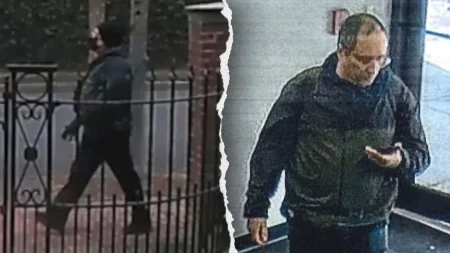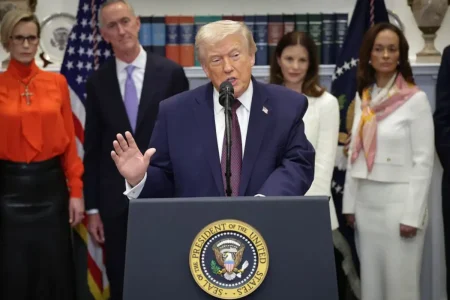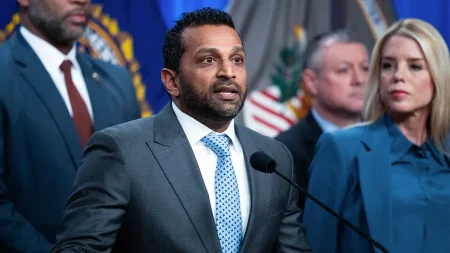Hope Flickers in Gaza and Israel as Cease-Fire Agreement Appears Within Reach
Cautious Celebrations Emerge Amid Ongoing Diplomatic Negotiations
In a region long accustomed to suffering and conflict, a fragile sense of optimism has begun to take hold across Gaza and Israel as diplomats inch closer to finalizing a cease-fire agreement. Despite the absence of formal signatures on official documents, spontaneous celebrations have broken out in both territories – a powerful testament to the desperate yearning for peace after two devastating years of violence. Yet beneath these expressions of relief lies a complex mixture of hope and hesitation, as civilians who have endured unimaginable hardships remain wary of premature jubilation.
The tentative celebrations began shortly after international mediators announced significant progress in the negotiations between Israeli officials and Hamas representatives. In Gaza City, where buildings stand in ruins and basic necessities remain scarce, residents gathered in small groups, some waving Palestinian flags while others simply embraced family members with tears streaming down their faces. “We want to believe this is real,” said Mahmoud Al-Najjar, a 54-year-old teacher whose home was destroyed in the early months of the conflict. “For two years, we have lived in a nightmare with no end. Now, we pray this is truly the beginning of something better.” Similar scenes unfolded in Tel Aviv, where Israeli citizens released blue and white balloons into the evening sky and organized impromptu peace rallies in public squares, though participation remained tempered by the painful memory of previous failed agreements.
The Human Cost: Two Years of Devastating Conflict
The emotional response to the potential cease-fire reflects the staggering toll this conflict has exacted on civilians caught in its crossfire. Health officials report that thousands have lost their lives since hostilities escalated two years ago, with children accounting for a disproportionate number of casualties. Beyond the devastating death toll, the region’s infrastructure lies in tatters, with critical hospitals operating at minimal capacity, schools reduced to rubble, and water treatment facilities severely compromised. The psychological impact has been equally catastrophic, with mental health professionals documenting alarming rates of post-traumatic stress disorder, particularly among children who have known nothing but war for a significant portion of their young lives.
“What people outside the region often fail to comprehend is how this conflict penetrates every aspect of daily existence,” explained Dr. Sarah Levine, a trauma specialist who has worked with victims on both sides of the border. “For Israelis, there’s been the constant fear of rocket attacks and security threats. For Palestinians in Gaza, it’s been a struggle for basic survival amid blockades, bombardment, and displacement. Both populations are exhausted in ways that statistics simply cannot capture.” Economic data underscores this reality, with Gaza’s unemployment rate soaring above 70 percent while businesses in southern Israeli communities have suffered billions in losses due to security concerns and population displacement. Beyond these measurable impacts lies the incalculable cost of interrupted educations, separated families, and dreams deferred as an entire generation comes of age amid violence and uncertainty.
Diplomatic Breakthrough: Inside the Negotiation Process
The apparent breakthrough follows months of intensive negotiations facilitated by a coalition of international mediators from Egypt, Qatar, the United States, and the European Union. According to diplomatic sources speaking on condition of anonymity, the proposed agreement includes provisions for a phased cessation of hostilities, the withdrawal of Israeli forces from certain areas, humanitarian aid corridors, and preliminary discussions about prisoner exchanges. “This framework represents the most significant progress we’ve seen since the conflict began,” noted Ambassador Khalid Al-Mahmoud, a senior Egyptian diplomat involved in the mediation efforts. “Both sides have made difficult concessions, recognizing that the status quo has become unsustainable for their populations.”
The negotiations have overcome numerous obstacles, including several near-collapses when violence on the ground threatened to derail diplomatic progress. A particularly challenging aspect involved reconciling Hamas’s demands for complete Israeli withdrawal from Gaza with Israel’s insistence on security guarantees against future attacks. The tentative compromise reportedly involves international monitoring mechanisms and phased implementation timelines tied to specific security benchmarks. While negotiators emphasize that final details remain under discussion, the framework represents what U.S. Secretary of State described as “a genuine opportunity to end the immediate violence and create space for addressing the underlying causes of conflict.” Political analysts note that domestic pressures have played a significant role in pushing both sides toward compromise, with recent polls showing overwhelming majorities in both Israeli and Palestinian societies favoring an end to hostilities, even if certain long-term political objectives remain unresolved.
Humanitarian Crisis and Recovery Challenges
As diplomatic discussions continue, humanitarian organizations are already mobilizing to address the monumental needs that will emerge in a post-conflict environment. The United Nations estimates that rebuilding Gaza’s basic infrastructure will require billions in international aid and many years of sustained effort. Critical immediate needs include emergency medical supplies, food security interventions, and safe drinking water – all of which have been severely compromised during the prolonged conflict. “We’re preparing for a massive humanitarian response the moment access becomes possible,” said Maria Rodriguez, Emergency Response Coordinator for International Aid Alliance. “But we must be realistic about the scale of the challenges ahead. This isn’t just about rebuilding structures; it’s about rebuilding lives and communities that have been shattered.”
The healthcare system presents perhaps the most urgent challenge, with medical facilities operating at approximately 30 percent capacity due to damage, supply shortages, and the exodus of healthcare professionals. Thousands of patients requiring specialized care, including those with chronic conditions and war injuries, have been unable to access appropriate treatment. Public health experts also warn about the potential for disease outbreaks given the compromised sanitation systems and overcrowded conditions in displacement centers. On the Israeli side, communities near the Gaza border face their own recovery challenges, with thousands of residents still living in temporary accommodations after fleeing rocket attacks. Mental health services will be crucial for both populations, with preliminary assessments suggesting rates of trauma-related conditions far exceeding the capacity of existing support systems.
Between Hope and Skepticism: Public Reaction to the Potential Agreement
Despite the jubilant scenes playing out in some areas, many civilians on both sides remain cautiously restrained in their optimism. “I’ve lived through too many failed peace processes to celebrate before the ink is dry,” remarked David Cohen, a 67-year-old resident of Ashkelon who has spent countless hours in bomb shelters over the past two years. This sentiment finds its echo across Gaza, where residents like Fatima Al-Bakri, a mother of four, temper hope with painful experience. “We want peace more than anything,” she explained while waiting in line for water distribution, “but we have learned to protect our hearts from disappointment.” Political divisions within both Israeli and Palestinian society further complicate public responses, with hardline factions on both sides already voicing opposition to compromises contained in the draft agreement.
Religious leaders have emerged as influential voices in shaping public reception to the potential cease-fire. In an interfaith initiative, prominent rabbis, imams, and Christian clergy issued a joint statement urging their communities to “embrace this fragile opportunity for peace with patience and goodwill.” The statement emphasized shared values of human dignity and the sanctity of life while acknowledging the difficult path ahead. Youth-led peace movements have gained particular momentum in recent days, organizing social media campaigns and public demonstrations supporting diplomatic solutions. “This conflict has consumed our childhoods, but it doesn’t have to define our futures,” said 19-year-old activist Maya Levinson at a student rally in Jerusalem. As negotiations enter what diplomats describe as the “final critical phase,” ordinary citizens across Gaza and Israel find themselves balanced on an emotional knife-edge – desperately hoping for peace while bracing themselves for the possibility that celebrations may prove premature.
As the region holds its collective breath, waiting for official confirmation of the agreement, one reality becomes increasingly clear: the true work of building a sustainable peace will only begin once the documents are signed. The path toward healing will require not just political agreements but a profound commitment to reconciliation, reconstruction, and addressing the underlying causes of conflict that have perpetuated cycles of violence for generations. For now, in the streets of Gaza City and Tel Aviv alike, a cautious hope flickers – a hope that this time might truly be different.










